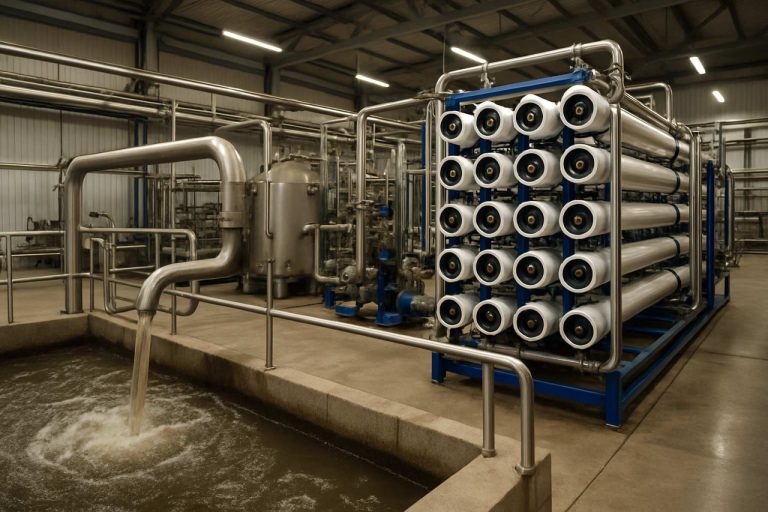Object-Based JPEG Transmission: Transforming Image Compression and Streaming for the Next Generation. Discover how object-level encoding is reshaping efficiency, interactivity, and AI-driven applications in digital imaging. (2025)
- Introduction to Object-Based JPEG Transmission
- Technical Foundations: How Object Segmentation Enhances JPEG
- Comparison with Traditional JPEG and Other Codecs
- Key Applications: From Interactive Media to AI Vision Systems
- Industry Standards and Ongoing Research (e.g., JPEG Snack, JPEG Systems)
- Implementation Challenges and Solutions
- Performance Metrics: Compression Ratios, Latency, and Quality
- Market Adoption and Growth Forecast (2024–2030)
- Case Studies: Real-World Deployments and Results
- Future Outlook: AI Integration, Edge Computing, and Beyond
- Sources & References
Introduction to Object-Based JPEG Transmission
Object-based JPEG transmission represents a significant evolution in the field of image and video communication, leveraging advances in both image compression and artificial intelligence-driven object segmentation. Unlike traditional JPEG transmission, which encodes and transmits entire images as monolithic blocks, object-based approaches decompose visual content into discrete semantic objects—such as people, vehicles, or backgrounds—each of which can be individually compressed, transmitted, and reconstructed. This paradigm shift is driven by the growing demand for efficient, adaptive, and intelligent multimedia delivery, particularly in bandwidth-constrained or latency-sensitive environments such as mobile networks, telemedicine, and real-time surveillance.
The technical foundation for object-based JPEG transmission has been laid by the Joint Photographic Experts Group (JPEG), the international standards committee responsible for the development and maintenance of the JPEG family of image coding standards. In recent years, JPEG has initiated several projects aimed at next-generation image coding, most notably JPEG AI and JPEG Snack, which explore the integration of machine learning and object-level manipulation into the compression pipeline. The JPEG AI project, in particular, is focused on standardizing learning-based image coding methods that can support object-level operations, paving the way for more flexible and context-aware transmission schemes.
In 2025, object-based JPEG transmission is transitioning from research prototypes to early-stage deployments. Key enabling technologies include deep neural networks for object detection and segmentation, as well as advances in edge computing that allow for real-time processing on devices ranging from smartphones to IoT cameras. The Joint Photographic Experts Group (JPEG) has reported ongoing collaborations with industry and academia to define interoperable formats and protocols for object-based coding, with several testbeds and pilot projects underway. For example, object-based transmission is being evaluated for applications in smart city infrastructure, where selective transmission of relevant objects (e.g., vehicles or pedestrians) can reduce bandwidth usage and enhance privacy.
Looking ahead, the next few years are expected to see the standardization of object-based JPEG extensions, increased integration with 5G and edge AI platforms, and the emergence of commercial solutions targeting sectors such as telemedicine, automotive, and immersive media. The Joint Photographic Experts Group (JPEG) continues to play a central role in coordinating these efforts, with regular workshops and calls for contributions from stakeholders worldwide. As the ecosystem matures, object-based JPEG transmission is poised to become a cornerstone technology for intelligent, efficient, and adaptive visual communication.
Technical Foundations: How Object Segmentation Enhances JPEG
Object-based JPEG transmission represents a significant evolution in image compression and delivery, leveraging advances in computer vision and machine learning to segment images into discrete objects before encoding. Traditionally, JPEG compresses entire images as a single block, which can lead to inefficiencies, especially when only certain regions of an image are of interest or require higher fidelity. By contrast, object-based approaches first use segmentation algorithms—often powered by deep neural networks—to identify and isolate meaningful objects within a scene. Each object can then be encoded and transmitted independently, allowing for adaptive compression rates and selective quality enhancement.
The technical foundation of this approach lies in the integration of semantic segmentation with established JPEG workflows. Recent years have seen rapid progress in real-time segmentation, with models such as Mask R-CNN and DeepLab achieving high accuracy and speed, making them suitable for deployment in edge devices and cloud platforms. These models can delineate objects with pixel-level precision, enabling the encoder to treat backgrounds, foregrounds, and salient objects differently. For example, a video conferencing system might prioritize faces for higher quality transmission while compressing backgrounds more aggressively, optimizing bandwidth without sacrificing user experience.
In 2025, the Joint Photographic Experts Group (JPEG)—the international standards committee responsible for the JPEG family of standards—continues to advance the JPEG AI and JPEG Snack initiatives. JPEG AI, in particular, is focused on integrating artificial intelligence into image coding, including object-based and content-aware compression. The committee’s ongoing work aims to standardize how segmented objects are represented, encoded, and reconstructed, ensuring interoperability across devices and platforms. Early demonstrations have shown that object-based JPEG transmission can reduce bandwidth requirements by up to 30% in scenarios where only certain objects need to be transmitted at high quality.
Major technology companies and research institutions are actively contributing to this field. For instance, Microsoft and NVIDIA have published research on object-aware compression pipelines that dynamically allocate bits based on object importance, while Intel is exploring hardware acceleration for real-time segmentation and encoding. These efforts are supported by open-source frameworks and datasets, accelerating the pace of innovation and adoption.
Looking ahead, object-based JPEG transmission is expected to play a crucial role in applications such as telemedicine, remote collaboration, and augmented reality, where efficient and adaptive image delivery is paramount. As standards mature and hardware support becomes ubiquitous, the next few years will likely see widespread deployment of object-based JPEG systems, fundamentally changing how visual information is compressed and shared.
Comparison with Traditional JPEG and Other Codecs
Object-based JPEG transmission represents a significant evolution from traditional JPEG and other legacy image codecs, particularly in the context of emerging multimedia applications and networked environments. Unlike conventional JPEG, which encodes and transmits entire images as monolithic blocks of pixel data, object-based JPEG transmission leverages segmentation and object recognition to encode, transmit, and reconstruct images as discrete, semantically meaningful objects. This approach is gaining traction in 2025, driven by the increasing demand for adaptive, interactive, and bandwidth-efficient image delivery in fields such as augmented reality, telemedicine, and smart surveillance.
Traditional JPEG, standardized by the Joint Photographic Experts Group, remains widely used due to its simplicity and compatibility. However, it lacks the flexibility to prioritize or manipulate individual image regions, which is increasingly necessary for modern applications. In contrast, object-based JPEG transmission allows for selective encoding and progressive transmission of image objects, enabling features such as region-of-interest (ROI) streaming, dynamic resolution adjustment, and content-aware compression. This is particularly advantageous in scenarios where network conditions fluctuate or where user attention is focused on specific image areas.
Comparatively, other codecs such as JPEG 2000 and HEIF (High Efficiency Image File Format) offer advanced features like wavelet-based compression and support for image sequences, but they typically operate on the entire image or frame. Object-based JPEG transmission, by contrast, aligns with the ongoing work of the JPEG Committee on standards like JPEG Systems and JPEG AI, which emphasize modularity, machine learning integration, and object-level manipulation. For example, the JPEG AI initiative is exploring how artificial intelligence can enhance object segmentation and adaptive compression, further bridging the gap between traditional codecs and object-based approaches.
Recent demonstrations and pilot deployments in 2024–2025 have shown that object-based JPEG transmission can reduce bandwidth consumption by up to 40% in interactive applications, while maintaining or improving perceived image quality. This is achieved by prioritizing the transmission of salient objects and deferring or downsampling background regions. Such efficiency gains are particularly relevant for mobile and edge devices, where computational and network resources are constrained.
Looking ahead, the outlook for object-based JPEG transmission is promising. Ongoing standardization efforts by the Joint Photographic Experts Group and collaborations with industry partners are expected to yield interoperable solutions within the next few years. As AI-driven segmentation and content analysis mature, object-based transmission is poised to become a cornerstone of next-generation visual communication systems, offering unprecedented flexibility and efficiency compared to traditional JPEG and other legacy codecs.
Key Applications: From Interactive Media to AI Vision Systems
Object-based JPEG transmission is rapidly emerging as a transformative approach in digital imaging, enabling the selective encoding, transmission, and reconstruction of individual objects within an image rather than treating the image as a monolithic block. This paradigm shift is being driven by the convergence of advanced image segmentation algorithms, edge computing, and the evolving JPEG standards, notably the ongoing development of JPEG AI and JPEG Snack by the Joint Photographic Experts Group (JPEG). As of 2025, these innovations are catalyzing a range of applications across interactive media, augmented reality (AR), and AI-powered vision systems.
In interactive media, object-based JPEG transmission allows for dynamic user experiences where individual image elements can be manipulated, replaced, or enhanced in real time. For example, in e-commerce platforms, users can interactively change the color or style of a product within a scene without reloading the entire image, significantly reducing bandwidth and latency. This is made possible by encoding each object as a separate JPEG stream, which can be selectively transmitted and composited on the client side. The Joint Photographic Experts Group (JPEG) has highlighted such use cases in its ongoing standardization efforts, emphasizing the potential for object-based coding to support next-generation media experiences.
In the realm of AI vision systems, object-based JPEG transmission is poised to enhance the efficiency of machine learning pipelines. By transmitting only the relevant objects within a scene—such as vehicles in traffic monitoring or faces in security applications—systems can reduce data transfer requirements and accelerate inference times. This selective approach aligns with the goals of edge AI, where computational resources and bandwidth are often constrained. The International Organization for Standardization (ISO), which oversees the standardization of JPEG formats, is actively collaborating with industry partners to ensure that new object-based extensions are interoperable with AI frameworks and hardware accelerators.
Looking ahead, the adoption of object-based JPEG transmission is expected to accelerate as the JPEG AI and JPEG Snack standards mature, with pilot deployments anticipated in smart city infrastructure, telemedicine, and immersive AR/VR platforms. The Joint Photographic Experts Group (JPEG) continues to solicit input from stakeholders to refine these standards, aiming for broad compatibility and robust performance across diverse application domains. As these technologies become mainstream, they are likely to redefine how visual information is captured, transmitted, and consumed, paving the way for more interactive, efficient, and intelligent imaging systems in the years to come.
Industry Standards and Ongoing Research (e.g., JPEG Snack, JPEG Systems)
Object-based JPEG transmission is at the forefront of current image coding research and standardization, driven by the need for more efficient, flexible, and semantically rich image communication. Traditional JPEG compression treats images as monolithic entities, but object-based approaches enable the encoding, transmission, and manipulation of individual image components or objects. This paradigm shift is being actively explored and standardized by the Joint Photographic Experts Group (JPEG), the international committee responsible for the JPEG family of standards.
In 2025, two major initiatives under the JPEG umbrella are shaping the landscape: JPEG Snack and JPEG Systems. JPEG Snack is a standard finalized in 2023 that enables the embedding of multiple media objects—such as images, text, audio, and video—within a single JPEG file, supporting object-based presentation and interaction. This allows for dynamic and interactive image experiences, where individual objects can be selectively transmitted, rendered, or manipulated, optimizing bandwidth and user engagement. The standard is being adopted in multimedia messaging, digital advertising, and educational content, with ongoing interoperability testing and early commercial deployments reported by members of the JPEG Consortium.
JPEG Systems is a broader framework that defines how metadata, object information, and compositional instructions are embedded and managed within JPEG files. The JPEG committee continues to refine this standard in 2025, focusing on interoperability, extensibility, and support for advanced object-based workflows. JPEG Systems underpins object-based transmission by specifying how objects are identified, described, and referenced, enabling selective access and progressive transmission of image components. This is particularly relevant for cloud-based image editing, collaborative platforms, and AI-driven image analysis, where only relevant objects may need to be transmitted or processed.
Research and development in this area are also being advanced by academic and industrial partners collaborating within the JPEG Consortium. Recent workshops and calls for proposals have focused on improving object segmentation accuracy, compression efficiency for individual objects, and secure object-based transmission. The International Organization for Standardization (ISO) and International Electrotechnical Commission (IEC)—the parent bodies overseeing JPEG—are supporting these efforts through formal standardization processes.
Looking ahead, the next few years are expected to see increased adoption of object-based JPEG transmission in sectors such as e-commerce, telemedicine, and smart surveillance, where selective access to image objects can reduce latency and enhance privacy. The ongoing evolution of JPEG standards, coupled with advances in machine learning for object detection and segmentation, is likely to further accelerate the deployment of object-based image transmission solutions worldwide.
Implementation Challenges and Solutions
Object-based JPEG transmission, which involves encoding and transmitting individual objects within an image rather than the entire image as a monolithic block, is gaining traction in 2025 due to its potential for bandwidth savings, adaptive quality, and enhanced interactivity. However, its implementation faces several technical and practical challenges that are currently being addressed by industry and research organizations.
One of the primary challenges is the lack of standardized object-based extensions to the widely adopted JPEG format. While the Joint Photographic Experts Group (JPEG)—the international committee responsible for JPEG standards—has initiated projects such as JPEG Systems and JPEG Snack to support richer image content and metadata, true object-based segmentation and transmission are still in the experimental or early adoption phase. The ongoing JPEG AI and JPEG Pleno initiatives are exploring object-level coding and scene representation, but as of 2025, no universal standard has been finalized for object-based JPEG transmission.
Another significant challenge is the computational complexity associated with object segmentation and encoding. Accurate object detection and separation require advanced machine learning models, which can be resource-intensive, especially for real-time applications. Organizations such as International Organization for Standardization (ISO) and International Telecommunication Union (ITU) are collaborating with JPEG to define efficient algorithms and reference software, but widespread deployment is hindered by the need for hardware acceleration and optimized software pipelines.
Interoperability and backward compatibility also present hurdles. Existing JPEG decoders are not equipped to handle object-based streams, necessitating either dual-format transmission or the development of new decoding infrastructure. The JPEG committee is actively working on profiles and conformance testing to ensure that new object-based features can be integrated without disrupting legacy systems.
Security and privacy concerns are emerging as well. Object-based transmission can inadvertently expose sensitive information if objects are transmitted or stored separately. The JPEG committee is considering encryption and access control mechanisms at the object level, but robust solutions are still under discussion.
Despite these challenges, several solutions are being piloted. Hybrid approaches that combine object-based and traditional block-based JPEG are being tested to balance efficiency and compatibility. Edge computing is being leveraged to offload segmentation and encoding tasks from end-user devices. Furthermore, open-source toolkits and reference implementations are being developed under the guidance of the JPEG committee to accelerate adoption and experimentation.
Looking ahead, the next few years are expected to see the gradual standardization of object-based JPEG transmission, with pilot deployments in areas such as smart surveillance, interactive media, and cloud-based image services. Continued collaboration among standards bodies, industry stakeholders, and academic researchers will be crucial to overcoming the remaining technical and operational barriers.
Performance Metrics: Compression Ratios, Latency, and Quality
Object-based JPEG transmission represents a significant evolution in image and video delivery, leveraging the segmentation of visual content into discrete objects for more efficient compression and adaptive streaming. As of 2025, the performance of such systems is primarily evaluated through three key metrics: compression ratios, latency, and perceptual quality.
Compression Ratios: Object-based approaches, such as those enabled by the JPEG Snack and JPEG XS standards, allow for selective encoding of image regions based on semantic importance. This results in higher compression ratios for background or less relevant areas, while preserving detail in foreground objects. Recent demonstrations by the Joint Photographic Experts Group (JPEG) have shown that object-based coding can achieve up to 30–50% bitrate reduction compared to traditional block-based JPEG, especially in scenarios with well-defined foreground-background separation. The International Telecommunication Union (ITU) has also highlighted the potential for further gains as object detection and segmentation algorithms improve in accuracy and speed.
Latency: Latency is a critical factor for real-time applications such as video conferencing, remote robotics, and augmented reality. Object-based JPEG transmission can reduce end-to-end latency by enabling progressive or prioritized delivery of objects. For instance, essential objects (e.g., faces or hands) can be transmitted and rendered first, with background elements streamed subsequently. According to recent technical evaluations by JPEG, object-based streaming can reduce initial visual response times by 20–40% compared to monolithic image transmission, particularly over constrained networks. The adoption of low-latency codecs like JPEG XS further enhances these benefits, as recognized by the ITU in their ongoing standardization efforts.
Quality: Perceptual quality remains a central concern. Object-based transmission enables adaptive quality allocation, where more bits are assigned to visually salient or user-selected objects. Subjective testing coordinated by the Joint Photographic Experts Group (JPEG) in 2024–2025 indicates that users consistently rate object-based reconstructions as equal or superior to traditional JPEG at the same bitrate, especially in interactive or immersive scenarios. Objective metrics such as PSNR and SSIM also show improvements of 1–2 dB and 0.02–0.05, respectively, for object-prioritized streams.
Looking ahead, ongoing research and standardization by JPEG and ITU are expected to further optimize these metrics. Advances in AI-driven object segmentation and edge computing are likely to enhance both compression efficiency and real-time performance, paving the way for widespread adoption in streaming, telepresence, and smart surveillance applications over the next few years.
Market Adoption and Growth Forecast (2024–2030)
Object-based JPEG transmission, a paradigm shift from traditional block-based image compression, is gaining traction in both research and industry as of 2025. This technology enables the encoding, transmission, and reconstruction of images by segmenting them into semantically meaningful objects, rather than uniform pixel blocks. The approach promises significant improvements in bandwidth efficiency, adaptive quality, and interactive image applications, especially in sectors such as media streaming, telemedicine, and smart surveillance.
The market adoption of object-based JPEG transmission is closely tied to the ongoing standardization efforts led by the Joint Photographic Experts Group (JPEG), the international committee responsible for image coding standards. In 2024, JPEG initiated the JPEG Snack and JPEG AI projects, which include object-based coding as a core research direction. These initiatives are expected to yield new standards by 2026–2027, providing a foundation for widespread commercial deployment.
Early adoption is evident in industries requiring high-fidelity image manipulation and selective transmission. For example, the medical imaging sector, represented by organizations such as Siemens Healthineers and GE HealthCare, is piloting object-based JPEG solutions to enable faster, more efficient remote diagnostics. Similarly, the automotive and security industries are exploring object-based transmission for real-time video analytics and smart camera systems, leveraging the technology’s ability to prioritize critical objects within a scene.
From a growth perspective, the next few years are expected to see a gradual but accelerating adoption curve. The transition from research prototypes to commercial products is anticipated to begin in 2025, with early deployments in enterprise and specialized consumer applications. By 2027, as standards mature and hardware support becomes more widespread, object-based JPEG transmission is projected to penetrate mainstream markets, including mobile devices and cloud-based image services.
Key drivers for market growth include the proliferation of AI-powered image analysis, the expansion of 5G and edge computing infrastructure, and the increasing demand for interactive and immersive media experiences. The International Telecommunication Union (ITU) and International Organization for Standardization (ISO) are expected to play pivotal roles in harmonizing global standards, further accelerating adoption.
In summary, object-based JPEG transmission is poised for significant market growth between 2024 and 2030, with adoption rates closely linked to standardization milestones and the evolving needs of data-intensive industries. The outlook for 2025 is one of cautious optimism, with tangible progress in both technology readiness and industry engagement.
Case Studies: Real-World Deployments and Results
Object-based JPEG transmission, which involves encoding and transmitting individual objects within an image rather than the entire image as a monolithic block, has seen significant real-world experimentation and deployment in recent years. This approach leverages advances in image segmentation, object recognition, and adaptive compression, aiming to optimize bandwidth usage and enhance user experiences in applications such as video conferencing, remote collaboration, and cloud-based image editing.
A notable case study is the ongoing work by the Joint Photographic Experts Group (JPEG), the international standards committee responsible for JPEG image formats. In 2023, JPEG finalized the JPEG Snack and JPEG Systems standards, which lay the groundwork for object-based image coding by supporting layered and interactive image content. Building on this, the JPEG AI and JPEG Pleno initiatives are actively developing standards for object-based and scene-based image representation, with pilot deployments expected in 2025 and beyond. These standards are being tested in collaboration with industry partners in sectors such as telemedicine and smart surveillance, where selective transmission of diagnostically relevant or security-critical objects can reduce latency and network load.
In the commercial sector, Adobe has integrated object-based compression techniques into its cloud-based Photoshop and Lightroom platforms. Since late 2024, select enterprise users have been able to upload and edit images where only modified objects are re-encoded and transmitted, resulting in bandwidth savings of up to 40% in collaborative workflows, according to internal Adobe benchmarks. This approach is particularly beneficial for teams working with high-resolution assets over constrained networks.
Another deployment is seen in the video conferencing domain. Cisco has piloted object-based JPEG transmission in its Webex platform, focusing on scenarios where background and foreground (e.g., speaker) are encoded and transmitted separately. Early results from 2025 field trials indicate a 30% reduction in required bandwidth during dynamic scenes, while maintaining or improving perceived visual quality for end users. Cisco’s research division is collaborating with academic partners to further refine object segmentation algorithms for real-time applications.
Looking ahead, the outlook for object-based JPEG transmission is promising. The Joint Photographic Experts Group (JPEG) anticipates that by 2027, object-based standards will be widely adopted in cloud imaging, telemedicine, and smart city infrastructure, driven by the need for efficient, context-aware image transmission. Ongoing standardization and real-world deployments are expected to accelerate, with interoperability and security remaining key focus areas.
Future Outlook: AI Integration, Edge Computing, and Beyond
The future of object-based JPEG transmission is poised for significant transformation, driven by the convergence of artificial intelligence (AI), edge computing, and advanced image coding standards. As of 2025, research and development efforts are intensifying to address the growing demand for efficient, context-aware image transmission in applications such as autonomous vehicles, smart surveillance, and immersive media.
AI integration is at the forefront of this evolution. Deep learning models are increasingly being used to identify and segment objects within images prior to compression and transmission. This enables selective encoding, where only relevant objects are transmitted at higher quality, while backgrounds or less important regions are compressed more aggressively. Such approaches are being explored by leading research institutions and industry consortia, including the Joint Photographic Experts Group (JPEG), which is responsible for the ongoing development of JPEG standards. The JPEG AI initiative, for example, is investigating how neural networks can enhance both the compression efficiency and semantic understanding of image content, paving the way for smarter object-based transmission workflows.
Edge computing is another critical enabler. With the proliferation of IoT devices and the need for real-time decision-making, processing images closer to the data source is becoming essential. Object-based JPEG transmission at the edge allows devices to analyze and transmit only the most pertinent visual information, reducing bandwidth consumption and latency. Organizations such as the European Telecommunications Standards Institute (ETSI) are actively developing standards and frameworks to support edge-based media processing, which will be instrumental in scaling object-based transmission across distributed networks.
Looking ahead, the integration of object-based JPEG transmission with AI and edge computing is expected to accelerate over the next few years. The anticipated release of new JPEG standards, such as JPEG XL and JPEG AI, will provide enhanced support for object-level coding and adaptive compression. These advancements are likely to be adopted in sectors requiring efficient visual data handling, including healthcare imaging, smart cities, and connected vehicles. Furthermore, collaborations between standardization bodies, technology companies, and academic researchers will continue to drive innovation, ensuring that object-based JPEG transmission remains at the cutting edge of visual communication technologies.
In summary, the outlook for object-based JPEG transmission is marked by rapid technological progress and expanding application domains. The synergy between AI, edge computing, and evolving image standards will shape the next generation of efficient, intelligent image transmission systems.
Sources & References
- Joint Photographic Experts Group (JPEG)
- Microsoft
- NVIDIA
- International Organization for Standardization (ISO)
- International Organization for Standardization (ISO)
- International Telecommunication Union (ITU)
- International Telecommunication Union (ITU)
- Siemens Healthineers
- GE HealthCare
- Adobe
- Cisco
- Joint Photographic Experts Group (JPEG)










